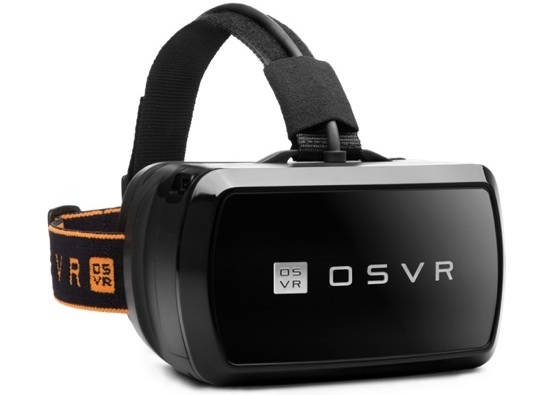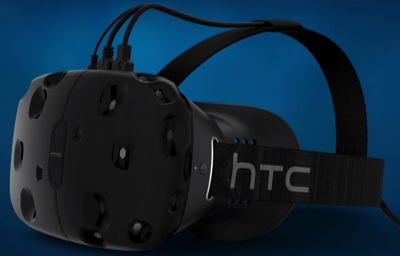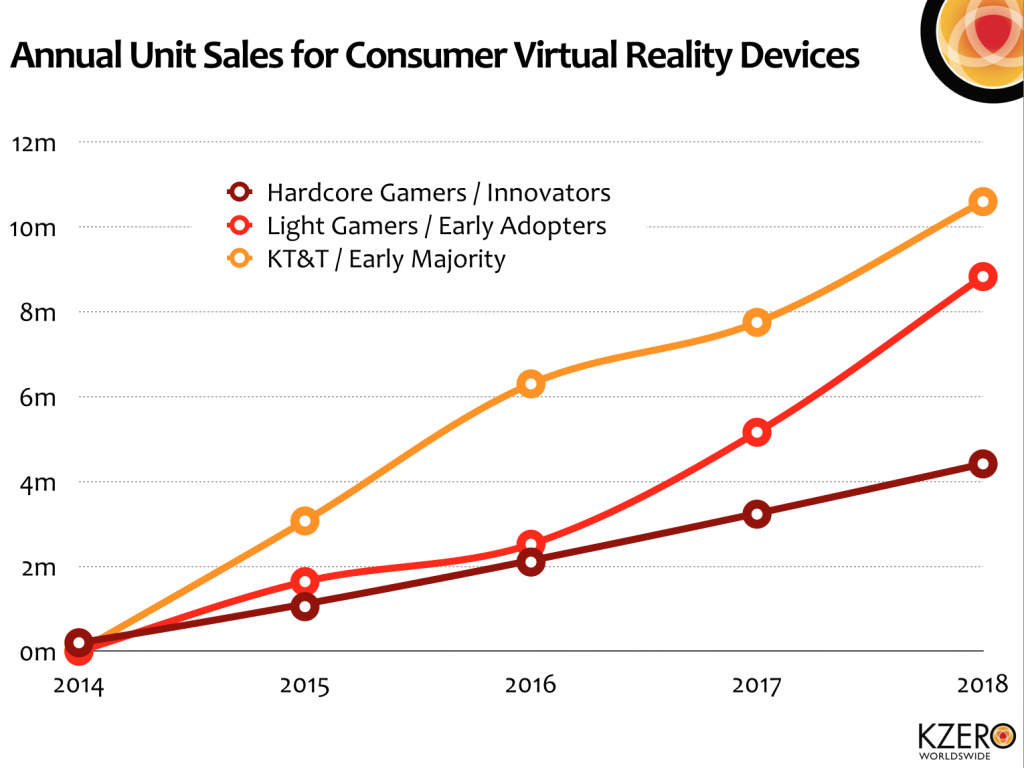
At this week’s E3 show in Los Angeles, virtual reality took another step toward becoming the real deal as companies like Sony, Microsoft, and Facebook’s Oculus showed off VR headsets. More significantly for the never-say-die Linux gaming community, as well as others looking for an open VR platform for immersive applications, up-and-comer Razer announced upgrades for its own Linux-compatible, fully open source VR Open Source Virtual Reality (OSVR) headset. In addition, Valve had updates on its SteamVR platform, and HTC showed off its SteamVR-based Vive headset, which can similarly be controlled from a Linux desktop.
At E3, Razer announced Android support for its OSVR headset, which already supported Linux and Windows, and released OSVR Hacker Development Kit 1.2, which adds an IR-based positional tracking system that provides positional information at 100Hz over 360 degrees. The upgrade comes only six months after Razer announced the OSVR kit and OSVR community project, and less than three months since it released the first OSVR development kit.
At E3, the Razer-backed OSVR project announced 15 new members, bringing the total to 144. Members include game publishers like Ubisoft, Techland, and Gearbox, gaming engine firms like Unity, and as of last month, Valve.
The current OSVR 1.1 hardware, which is available for 199 Euros ($224), integrates a 5.5-inch FHD OLED display with 401 ppi resolution. It also includes independent adjustable optics and sensors for precise head tracking. Version 1.2 adds the 360-degree position tracking feature, as well as an associated IR camera. The 1.2 kit began shipping free to a limited number of developers, and will be available later this year for 299 Euros ($336).
Razer says it is working on swappable faceplates, most notably one that integrates Leap Motion’s gesture controller. The Leap Motion cameras and APIs enable augmented reality applications, in addition to a more convincing VR experience in which you can move virtual objects using 3D models of your hands.
The company is working on a mobile faceplate for a range of Android phones, much like Samsung’s Oculus-driven Gear VR headset or Google’s Cardboard. There will also be a module featuring Wearality’s150-degree field of view eyepiece.
On the software side, the OSVR plugin gives developers pre-configured access to gaming engines like Unity, Unreal, Unigine, MonoGame, and more recently, SteamVR. The software supports a dozen head-mounted displays in addition to Razer’s OSVR headset.
Razer, which recently launched a Forge TV Android TV gaming player, earlier this week acquired pioneering Android game player firm Ouya. The nearly bankrupt company paved the way for other Android gaming platforms like the Nvidia Shield.
Valve’s SteamVR comes to life in HTC Vive
Valve’s OSVR project membership doesn’t mean it’s switching its SteamVR headset to OSVR, but it is adding OSVR plugins to its open source version of the SteamVR software platform, called OpenVR. The OpenVR stack includes everything in SteamVR except for the Steam gaming platform.
 Whereas both the OSVR hardware and software are open source, only the OpenVR software is open source. SteamVR forms the basis for the upcoming HTC Vive headset, which will ship in a developer kit in the fall followed by a consumer release by the end of the year. A favorable Engadget hands-on report from E3 describes a Vive setup that includes two single-handed stick controllers and dual SteamVR base stations, which use lasers to track one’s location within a 15 x 15-foot space for a 360-degree experience.
Whereas both the OSVR hardware and software are open source, only the OpenVR software is open source. SteamVR forms the basis for the upcoming HTC Vive headset, which will ship in a developer kit in the fall followed by a consumer release by the end of the year. A favorable Engadget hands-on report from E3 describes a Vive setup that includes two single-handed stick controllers and dual SteamVR base stations, which use lasers to track one’s location within a 15 x 15-foot space for a 360-degree experience.
Like SteamVR, HTC’s Vive will support Linux desktops. This week, Valve and HTC also cut a deal with Microsoft to integrate the HTC Vive and SteamVR with Windows 10. This follows a closer partnership between Oculus and Microsoft (see farther below).
At E3, Microsoft showed off its own HoloLens VR headset. According to The Verge, a demo of a HoloLens optimized version of Minecraft shown on the big screen was far more impressive than on the HoloLens prototype itself, which has a limited field of view.
Valve’s SteamVR will also support Valve’s open source Linux-based SteamOS for Steam Machine computers. One of Valve’s key partners, Alienware, showed off a prototype this week of what should be the first Steam Machine. However, it was running Windows instead of SteamOS, which is expected on the shipping device in November. Alienware and other Steam Machine partners like Syber may well release both Windows and SteamOS versions.
Awesome, but not so Tuxy: Oculus and Morpheus
The Valve partnership with Microsoft follows a an announcement this week between Microsoft and Facebook’s Oculus, which will optimize the Rift for Windows 10. Oculus will also integrate a wireless Xbox One controller in the upcoming consumer version of its Oculus Rift headset. This will let users stream Xbox One games to the Rift via a Windows 10 PC. A Leap Motion controller, meanwhile, is now offered as a standard accessory on the developer version.
In May, while announcing hardware requirements for Windows-based desktops, Oculus said it was dropping plans to support Linux and Mac OS X. “We want to get back to development for OS X and Linux but we don’t have a timeline,” said Oculus.
Despite the lack of Linux support, you can still hack Linux devices with the Rift, but in a subservient role, as shown in a recent Team AirOSaugmented reality entry in the NASA Space App Challenge. Team AirOS controlled the Rift from a Windows laptop, but a Linux program running on an Intel Edison module displayed sensor readings on the Rift, which also integrated the Leap Motion controller.
At E3, Oculus showed off the final consumer prototype of its Rift, which is set for a Q1 2016 launch. The device includes an external sensor for positional tracking, as well as adjustable lenses.
The most impressive VR demo at E3 may have been Sony’s Morpheus, a VR headset for its Playstation 4 console. Due in the first half of the year, the prototype version wowed Wired’s Peter Rubin, who tried it out with a prototype of an Impulse Gear controller shaped like an automatic rifle. Rubin found the integration to be a compelling VR experience for first person shooter games, without the low latency or nausea associated with earlier attempts. Morpheus has its own “Move” motion controllers.
Sony Morpheus and VR gaming in general is spreading far beyond action games. Rubin quoted Sony VP Adam Boyes as saying he was surprised at the breadth of the games being ported to Morpheus, including puzzle and adventure games. Indeed, UK analytics firm KZero, which recently projected the consumer VR market will be worth $5.2 billion by 2018, estimated that while light VR gamers will initially track closely with hardcore VR gamers in terms of units sold, they will surge ahead between 2016 through 2018. Both segments will trail the “Kids, Tween, and Teen” segment (see chart).

VR turns a corner
Judging from the reports from E3, VR has finally turned the corner on latency and immersive 3D resolution, while largely solving the problems of vertigo and nausea. The technology has come a long way since the early ’90s when certain excitable young tech journalists proclaimed the age of VR was upon us. Yet there are frequent complaints about the need to be tethered to a computer.
Mobile VR kits like Samsung’s Android-driven Gear VR and Google’s open source, under $20 Cardboard VR kit, certainly remove the cable clutter. However, smartphone processors still have a ways to go before they’re powerful enough to compete with PC or console-based systems.
For now, VR headsets are peripherals, but fully embedded versions should emerge eventually. When they do, Linux and Android are likely to play a key role. They are already the major players in emerging, very similar augmented reality headsets, which are primarily aimed at field service and sports applications.


